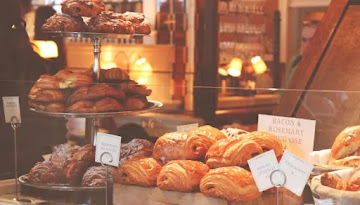At a time when conscious consumerism matters more than ever, investing in American made clothing means supporting local craftsmanship, ethical labor practices, and brands that prioritize quality over quantity. Our editors researched, tested, and lived in pieces from dozens of domestic designers to find the ones that truly deliver. Whether you're building a capsule wardrobe, seeking sustainable basics, or searching for standout pieces with heritage craftsmanship, these brands offer some of the best women's clothing made right here in the USA.
1. Harvest & Mill
Harvest & Mill is redefining what it means to make clothing locally and sustainably. Based in Berkeley, the brand produces all of its garments within a 15 mile radius of its studio, using 100% organic cotton that's grown and milled in the U.S. Every piece is sewn in America, dyed with non toxic materials (or left undyed), and delivered in plastic free packaging. But their commitment doesn’t stop there. Harvest & Mill offsets 100% of its carbon footprint, from manufacturing to office operations. A brand that’s as ethical and traceable as it is soft, cozy, and timeless. If you're looking to align your wardrobe with your values, this is a standout pick.
2. American Giant
Founded in 2012, American Giant has become a benchmark for high quality, American made apparel. The brand gained acclaim with its Classic Full Zip hoodie, lauded as "the greatest hoodie ever made" due to its exceptional craftsmanship and durability. American Giant's commitment to domestic manufacturing is evident in its use of 100% U.S. grown cotton and production facilities located in North Carolina and Los Angeles ontrolling its supply chain and selling directly to consumers, American Giant offers premium basics such as hoodies, tees, and jeans that are built to last. The brand's focus on sustainability and ethical labor practices ensures that each garment not only feels good but also aligns with conscious consumer values.

Often hailed as the company behind “the greatest hoodie ever made” American Giant has redefined what modern American manufacturing can look like. The brand skips flashy billboards and brick and mortar shops in favor of a direct to consumer model, allowing it to focus on what matters most exceptional quality, top tier fabrics, and stellar customer service. All cotton is grown and sewn in the Carolinas, and every piece especially their legendary Classic Full Zip hoodie features custom hardware, relentless attention to detail, and durable craftsmanship that lasts for years. Ultra comfy wardrobe staples that feel just as good as they look and support local industry every step of the way.
Customer Review "This is my second Classic Full Zip purchase. My first was years ago, and it’s still in great shape. Warm enough to wear as a jacket on cold days and perfect for a dog walk don’t get too warm, but don’t get cold. I wear a large so there’s room for an extra hoodie underneath on really cold days."
3. LA Relaxed
is a Los Angeles based brand that epitomizes sustainable fashion through its commitment to local production and eco friendly materials. Operating under the philosophy of measuring impact by "footsteps, not footprint," the company designs and manufactures all garments under one roof in LA, ensuring each piece is assembled in under 100 steps . The brand utilizes a range of sustainable fabrics, including GOTS certified organic cotton, TENCEL lyocell, and modal, all sourced locally
LA Relaxed's dedication to ethical practices extends to its workforce, providing living wages and maintaining a respectful, collaborative atmosphere . The brand's entire product line is vegan, and it avoids the use of plastics in packaging, opting instead for recycled and biodegradable materials. Recognized for its sustainability efforts, LA Relaxed has received a "Great" rating from Good On You, scoring 5 out of 5 in categories assessing environmental impact, labor conditions, and animal welfare
4. Hackwith Design House
Hackwith Design House (HDH) is a Minnesota based brand renowned for its commitment to ethical fashion and sustainable practices. Founded in 2010 by Lisa Hackwith, the company emphasizes creating long lasting, versatile clothing that is as unique as its wearer. Each piece is designed and sewn in house at their St. Paul studio, ensuring meticulous attention to detail and quality craftsmanship HDH operates on a made to order model, significantly reducing waste by producing garments only when ordered. This approach not only minimizes environmental impact but also allows for limited edition releases, with many items produced in runs of fewer than 25 pieces. The brand's aesthetic is characterized by minimalist designs and neutral palettes, offering timeless pieces that transcend seasonal trends

In addition to their core collection, HDH offers specialized lines such as HDH Plus, HDH Swim, and HDH Basics, catering to a diverse range of sizes and styles. Their commitment to sustainability extends beyond production through initiatives like The Sustain Shop, HDH encourages customers to return worn items for resale or recycling, promoting a circular fashion economy. While HDH has received a "Good" rating from sustainability evaluators for its environmental efforts, there is room for improvement in areas like formal labor policies and animal welfare transparency. Nonetheless, their dedication to ethical manufacturing and sustainable practices makes Hackwith Design House a standout choice for conscious consumers seeking quality, American made apparel
5. The Classic T Shirt Company
is a family owned brand dedicated to producing luxury, sustainable basics that are both timeless and ethically crafted. Operating out of Los Angeles, every garment is cut, sewn, and dyed locally, ensuring meticulous attention to detail and supporting the local economy. Their commitment to sustainability is evident in their use of 100% GOTS certified organic cotton, which is ethically sourced and contributes to water conservation by using 70% less water than conventional cotton. The brand also emphasizes eco friendly practices by utilizing plastic free, recycled, and recyclable packaging for all shipments. Beyond their environmental efforts, The Classic T Shirt Company pledges 1% of its profits to various charitable organizations, including Water for People, the Armenia Tree Project, and The Ocean Cleanup, reflecting their dedication to social responsibility. Their product line features a range of premium T shirts for both men and women, available in various styles such as crew necks, V necks, and long sleeves, all designed for comfort and longevity.

6. Jungmaven
is a pioneer in sustainable fashion, renowned for its commitment to hemp based apparel and environmental activism. Founded by Robert Jungmann, the brand emerged from a mission to combat deforestation and promote the benefits of industrial hemp. Jungmaven played a significant role in the legalization of hemp cultivation in the U.S., contributing to the passage of the 2018 Farm Bill The brand's clothing is proudly cut and sewn in Los Angeles, California, ensuring high quality craftsmanship and adherence to ethical labor standards. Jungmaven utilizes sustainable materials, primarily hemp blended with organic cotton, which are GOTS and OCS certified. Their product range includes a variety of casual wear such as t shirts, sweatshirts, tank tops, and dresses, all designed with a focus on comfort and durability. In addition to their sustainable production practices, Jungmaven encourages circular fashion through their "Ever Jung" resale platform, allowing customers to buy and sell pre owned Jungmaven garments. This initiative promotes longer product lifespans and reduces waste, aligning with the brand's environmental values.
7. MATE the Label
is a women owned brand committed to producing "clean essentials" that are as gentle on the planet as they are on your skin. Based in Los Angeles, MATE ensures that every garment is made within a 15 mile radius of its headquarters, emphasizing local production and reducing carbon emissions. The brand utilizes organic, natural, and non toxic materials, including organic cotton, linen, and TENCEL lyocell, to craft its range of loungewear, activewear, and everyday basics. MATE's commitment to sustainability extends to its packaging, which is entirely plastic free, and its circularity program that encourages customers to return old garments for recycling.
With certifications like Climate Neutral, Gots, and B Corp, Mate the Label stands out for its dedication to ethical practices and environmental responsibility. Their timeless designs and commitment to quality make them a go to for conscious consumers seeking stylish, sustainable options
8. Outerknown
Founded in 2015 by 11 time world champion surfer Kelly Slater and designer John Moore, Outerknown is a trailblazer in sustainable fashion. The brand was born out of a desire to merge style with a deep commitment to environmental and social responsibility. Outerknown's mission is to create high quality, sustainable products that last a lifetime, keeping garments out of landfills and in circulation forever. Outerknown utilizes eco friendly materials such as organic cotton, hemp, and recycled polyester in its apparel. As of 2022, 95% of the brand's fibers are sustainable, with a goal to achieve 100%. The company is also committed to fair labor practices, partnering with Fair Trade and B Corp certified suppliers and factories that have implemented sustainable manufacturing processes.

In addition to its sustainable production methods, Outerknown has implemented circular initiatives like the "Outerworn" resale platform, allowing customers to buy and sell pre owned Outerknown garments. The brand also offers a lifetime warranty on their S.E.A. jeans, emphasizing durability and long term wear. Eco Stylist Outerknown's product range includes a variety of men's and women's clothing, from their famous Blanket Shirts to recycled swimwear, all designed with both style and sustainability in mind.
The California Series and Project Vermont collections from Outerknown feature heritage inspired American made sweats and upcycled accessories respectively, both sources and made in the USA. The sweatshirts, shorts, and hoodies from the California Series are made from 100% Climate Beneficial cotton, grown and sewn in the Central Valley. Project Vermont’s upcycled bucket hats, market totes, mittens, and dog accessories are all pieced together in Saint Albans City, offsetting material otherwise destined for the landfill.































